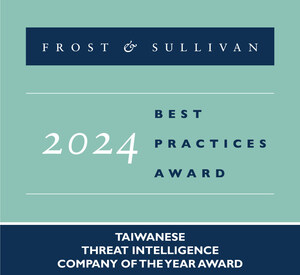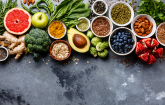Technology Innovation and Environmentally Sustainable Techniques Drive Double-digit Growth in North American Agricultural Biologicals Market
Investment in product demonstrations and bundling application equipment will strengthen growth opportunities, finds Frost & Sullivan's Visionary Science team
SANTA CLARA, California, June 22, 2017 /PRNewswire/ -- The North American agricultural biologicals market has witnessed double-digit growth in recent years, driven by several favorable trends. These include the use of technology innovation such as microbial-derived ingredients, seed inoculants, and bundle packaging; desire for environmentally sustainable techniques; new biological product releases; and a decline in synthetic chemical launches. Addressing challenges related to premium pricing, limited product knowledge among growers, and a decrease in available farm acreage can further boost market development.
North American Agricultural Biologicals Market, Forecast to 2022, new research from Frost & Sullivan's Future of Agriculture & Nutrition Growth Partnership Subscription, finds that the North American agricultural biologicals market reached $2.65 billion in 2016, with a market penetration rate of 8.6 percent. The industry is expected to grow at a compound annual growth rate (CAGR) of 11.5 percent, to reach $5.08 billion by 2022. The study focuses on drivers, restraints and technology trends within three classes of agricultural biologicals: biofertilizers, biostimulants, and biopesticides. Market share and competitive landscape for major players such as Monsanto, Novozymes, BASF, CH Biotech, Valent U.S.A., and Certis USA LLC are also discussed.
To schedule a Growth Strategy Dialog and discuss your strategic growth development and the growth opportunities impacting your business, click here.
"To increase the adoption and penetration of biological products, manufacturers must tackle efficacy and premium price concerns among price-sensitive farmers," said Frost & Sullivan Visionary Science Research Analyst Christopher Shanahan. "Investment in product demonstrations will increase product knowledge and value, while bundling application equipment and disease diagnostic services will drive adoption rates."
The traditional agrochemical market has reached maturity due to primary (government) and secondary (retailer) regulations, emerging consumer preferences, and increasing awareness about environmental sustainability. This has caused key companies like China National Chemical Corp, BASF, and Bayer Crop Science to purchase, merge, or partner with other agricultural biological companies to diversify their product portfolios.
Further trends and developments driving growth in the market include:
- Revenue boost due to end users' need to find more sustainable practices to increase crop yields;
- Adoption of agricultural biologicals into integrated crop management programs;
- Increased awareness and product knowledge of biostimulants;
- Growth of biofungicides for fungal disease prevention; and
- Uptake of biologically active fertilizers due to demand for organic and natural crops.
"Agrochemical companies can try to offset a decline in demand for traditional chemical fertilizers and pesticides by looking toward non-legume markets such as corn for growth opportunities," noted Shanahan.
About Frost & Sullivan
Frost & Sullivan, the Growth Partnership Company, works in collaboration with clients to leverage visionary innovation that addresses the global challenges and related growth opportunities that will make or break today's market participants. For more than 50 years, we have been developing growth strategies for the global 1000, emerging businesses, the public sector and the investment community. Contact us: Start the discussion
North American Agricultural Biologicals Market, Forecast to 2022
K0C7-88
Contact:
Jaylon Brinkley
Corporate Communications – North America
P: (210) 247.2481
F: (210) 348.1003
E: [email protected]






Share this article